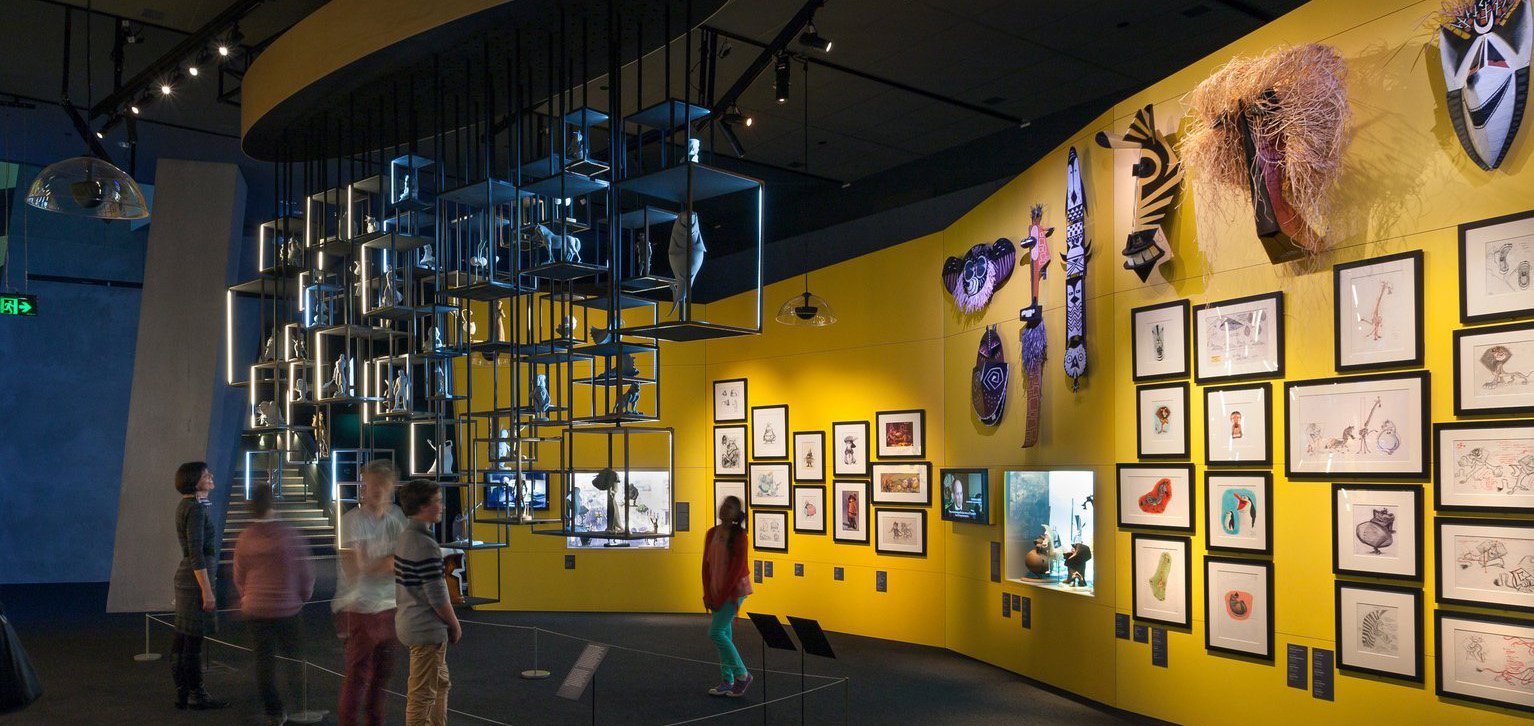We offer a structured, progressive curriculum…
Designed as an extension of our core programs…
Design. Innovate. Create. Explore. Hands-on learning…
We go beyond the classroom with excursions and tours that immerse students in the world of design

Design a Cosplay Character These Holidays!
Join our hands-on AI Design Lab, designed for creative kids aged 10 and up — where fashion, fantasy and future-tech come together in one exciting workshop.
7–9 July · Morning and Afternoon sessions.
OUR
PROGRAMS
At Visionary Design Academy, we offer a structured, progressive curriculum designed to prepare students for future study and careers in design. Our core programs focus on three key areas: Fashion & Accessory Design, Digital Media & Graphic Design, and Spatial & Architecture Design.
Each program blends creative exploration with technical skill development, giving students hands-on experience using industry-standard tools and processes.
At the heart of our offering is the DICE Program – VDA’s signature creative curriculum. DICE (Design. Innovate. Create. Explore.) empowers curious, hands-on learners to think like designers, solve problems creatively, and bring their ideas to life. From garment construction and branding to spatial thinking and digital storytelling, DICE builds both practical skills and creative confidence.
With small class sizes and individualised support, VDA creates a safe and inspiring space for students to experiment, take risks, and grow at their own pace. Through real-world projects, industry insights and collaborative challenges, students explore how design thinking can shape the world around them. It’s not just about making – it’s about making meaning.
Whether they’re just starting out or preparing a portfolio for tertiary study, our programs meet students where they are – and help them go further.
DICE
PROGRAM
Design. Innovate. Create. Explore.
The DICE (Design, Innovation, Creativity & Education) Program is a comprehensive and structured creative education initiative designed to fill a significant market gap by providing professional, design-focused learning for students aged 8 to 18 in Fashion and Accessory Design, Digital and Graphic Design, Spatial and Architecture Design, and the AI Design Lab.
Unlike traditional offerings, DICE integrates three core dimensions - design thinking, interdisciplinary capabilities, and hands-on practical operations - to systematically address the lack of structured creative pathways available to this age group. Developed collaboratively by Australian education specialists and creative industry consultants, the curriculum balances international best practices with localized adaptability, combining theoretical design knowledge, conceptual logic, project-based learning, and expressive skills.
DICE has received widespread recognition from educational authorities, academic institutions, and community organizations for its teaching effectiveness and market relevance. Supported by a standardized teaching authorization system - including structured teacher training, delivery support, and quality assurance - it enables scalable implementation and business growth for education providers.
-
Exploring creativity through garment construction, textile innovation, and contemporary fashion styling.
The Fashion & Accessory Design Program at Visionary Design Academy offers a structured, hands-on curriculum tailored for students aged 8–18. Designed to build both creative and technical confidence, the program nurtures individual style while developing skills relevant to today’s fashion and accessory industries. With a strong focus on sustainability, innovation, and professional practice, students progress from foundational techniques to advanced design and production.
This program is part of VDA’s broader DICE framework, empowering young designers to think critically, work collaboratively, and bring their creative visions to life.
DICE Mini Makers: Journey into Design
· Age Group: Grades 2–4 (Ages 7–10)
· Duration: 35 sessions across 4 terms
· Focus: Early design thinking, handcrafting, eco-creativity, basic digital design
· Remarks: Students can start either in Grade 2, Grade 3 or Grade 4
DICE Junior: Foundations in Creative Visual Design
· Age Group: Grades 5–6 (Ages 10–12)
· Duration: 35 sessions across 4 terms
· Focus: Core design principles, branding, textile illustration, portfolio creation
· Remarks: Students can start either in Grade 5 or Grade 6
· Prerequisite: N/A
DICE Intermediate: Fashion Design Program
· Age Group: Grades 7–9 (Ages 12–14)
· Duration: 35 sessions across 4 terms (includes 3 excursions)
· Focus: Garment design, patternmaking, sustainability, digital tools
· Remarks: Students can start either in Grade 7, Grade 8 or Grade 9
· Prerequisite: N/A
DICE Advanced Fashion Lab: Sketch to Stitch
· Age Group: Years 11–12 (Ages 16–18)
· Duration: 60 hours (30 group sessions + 15 individual sessions)
· Focus: End-to-end garment creation, pattern drafting, sewing, presentation
· Remarks: Students can start either in Grade 11 or Grade 12
· Prerequisite: Dice Intermediate: Fashion Design Program
-
Mastering tools for graphic design, digital communication, animation, visual storytelling, and multimedia production.
The Digital & Graphic Design Program at Visionary Design Academy provides a structured, hands-on curriculum that nurtures creativity while building essential technical skills. Students explore key areas including graphic design, animation, video production, and interactive media—developing the ability to communicate visually, think critically, and work across multiple platforms.
Aligned with VDA’s DICE framework, the program supports students aged 8–18 in building a strong foundation for future study and creative careers in the digital space, with a focus on industry-relevant tools, professional practice, and real-world application.
DICE Mini Makers: Journey into Design
· Age Group: Grades 2–4 (Ages 7–10)
· Duration: 35 sessions across 4 terms
· Focus: Early design thinking, handcrafting, eco-creativity, basic digital design
· Remarks: Students can start either in Grade 2, Grade 3 or Grade 4
DICE Junior: Foundations in Creative Visual Design
· Age Group: Grades 5–6 (Ages 10–12)
· Duration: 35 sessions across 4 terms
· Focus: Core design principles, branding, textile illustration, portfolio creation
· Remarks: Students can start either in Grade 5 or Grade 6
· Prerequisite: N/A
DICE Intermediate: Digital Media & Graphic Design
· Age Group: Grades 7–9 (Ages 12–15)
· Duration: 32 lessons across 4 terms
· Focus: Visual storytelling, branding, animation, UX/UI, portfolio development
· Remarks: Students can start either in Grade 7, Grade 8 or Grade 9
· Prerequisite: N/A
DICE Advanced: Digital Media & Graphic Design Lab
· Age Group: Years 10–12 (Ages 15–18)
· Duration: 60 hours (30 group sessions + 15 individual sessions)
· Focus: Adobe mastery, branding, animation, publication, web design, folio
· Remarks: Students can start either in Grade 11 or Grade 12
· Prerequisite: Dice Intermediate: Digital Media and Graphic Design
-
Blending creativity with structure, the Spatial & Architecture Design Lab introduces students to the fundamentals of spatial planning, model-making, and architectural thinking. Ideal for curious minds interested in interior design, built environments, and 3D design concepts, this lab nurtures problem-solving and visual communication skills through hands-on projects and digital exploration.
This program is currently in development and will launch soon. Stay tuned for updates as we expand our DICE Skill Labs into the world of spatial and architectural design.
-
Where future-tech meets creativity, the AI Design Lab empowers students to explore the intersection of design and artificial intelligence. From concept development to generative design and digital storytelling, students will experiment with AI tools to bring their creative ideas to life in new and exciting ways.
Currently in development, this innovative Skill Lab will launch soon. It’s an exciting addition to our DICE program—stay tuned as we explore what’s possible when imagination meets machine learning.
DICE SKILL
LABS
Designed as an extension of our core programs, the DICE Skill Labs offer focused, short-format courses that allow students to deepen their knowledge in specialised areas of design. Each Skill Lab is crafted to strengthen technical abilities, build creative confidence, and expose students to industry tools and workflows - all within a supportive, project-based environment.
From Fashion CAD and Garment Construction to Motion Design, Branding, and Web Development, these labs give students the opportunity to explore specific interests in greater depth. Whether they're mastering digital tools, experimenting with layout and typography, or developing professional finishing techniques, students gain real-world insight into the creative industries while developing their own unique voice.
Skill Labs are open to students in Years 8–12, and are perfect for those wanting to build a portfolio, explore a potential career path, or simply take their skills to the next level.
FASHION DESIGN SKILL LABS
-
Age Group: Grades 8–11 (Ages 13–17)
Duration: 20 sessions across 2 terms
Focus: Digital garment flats, fashion illustration, visual storytelling using Adobe Illustrator and Photoshop
Remarks: Designed for students interested in fashion digital design; no sewing required
Prerequisite: Basic computer literacy
-
Age Group: Grades 8–11 (Ages 13–17)
Duration: 20 sessions across 2 terms
Focus: Flat pattern drafting for skirt, bodice, and pant blocks; dart manipulation and style adaptations
Remarks: Technical course using paper-based pattern development
Prerequisite: None; ideal for those interested in fashion structure and garment design
-
Age Group: Grades 8–12 (Ages 13–18)
Duration: 20 sessions across 2 terms
Focus: Fabric grainlines, pattern layout efficiency, cutting techniques, and technical documentation
Remarks: Prepares students for production readiness; no garment sewing involved
Prerequisite: Recommended to have completed or be enrolled in Pattern Drafting although not mandatory
-
Age Group: Grades 9–12 (Ages 14–18)
Duration: 20 sessions across 2 terms
Focus: Sewing techniques, fabric manipulation, garment finishing, and error correction
Remarks: Practical, hands-on garment construction with final project assembly
Prerequisite: Fabric Layout & Cutting or basic sewing skills recommended although not mandatory
DIGITAL & GRAPHIC DESIGN SKILL LABS
-
Age Group: Grades 8–11 (Ages 13–17)
Duration: 10 sessions over 1 term
Focus: Frame-by-frame animation, character motion, visual effects using Adobe Animate & After Effects
Remarks: Suitable for students interested in storytelling and moving image design
Prerequisite: None; beginner-friendly
-
Age Group: Grades 8–11 (Ages 13–17)
Duration: 10 sessions over 1 term
Focus: Social content design, digital branding, platform-specific visuals using Canva, Adobe Express & Photoshop
Remarks: Ideal for aspiring content creators and young entrepreneurs
Prerequisite: None; basic digital skills helpful
-
Age Group: Grades 8–11 (Ages 13–17)
Duration: 10 sessions over 1 term
Focus: Layout design, typography, and publication assembly using Adobe InDesign, Photoshop & Illustrator
Remarks: Excellent for students interested in magazines, brochures, and editorial design
Prerequisite: None; integrates creative and technical skills
-
Age Group: Grades 8–11 (Ages 13–17)
Duration: 10 sessions over 1 term
Focus: Website planning, prototyping, HTML & CSS coding using Adobe XD and web editors
Remarks: Blends design thinking with technical web development; includes live coding
Prerequisite: None; a great entry to front-end development
EXCURSIONS
& TOURS
At Visionary Design Academy, we offer more than just classroom learning. Our excursions & tours provide students with the opportunity to explore the world of design through hands-on experiences, real-world exposure, and creative challenges. These activities are designed to be both professionally enriching and fun, helping students apply their skills in dynamic and engaging ways.
The excursions & tours are structured to connect students with both the professional and academic worlds of design. By exploring real-world design environments and attending university course information days, students will gain a comprehensive understanding of both industry practices and future education pathways, preparing them for successful careers in design.
-
Our Design Excursions provide students with immersive experiences in various design fields through interactive workshops, creative projects, and guidance from industry professionals. Tailored for different age groups and skill levels, these excursions offer students the opportunity to explore:
Fashion design concepts and prototyping
Digital media and creative content production
Architectural model-making and drafting
Interior design principles
CAD & 3D Modelling techniques
Creative Coding, introducing students to coding fundamentals within a design context, encouraging innovation and technical creativity
Held during school holidays, these excursions offer an exciting mix of hands-on learning and creative exploration. Students will have the chance to enhance their design skills while gaining real-world insights into their chosen fields, all within a supportive and engaging environment.
-
Our exclusive Design Tours take students on a journey into the heart of the global design industry, providing first-hand exposure to leading studios, agencies, and academic institutions. Key features of these tours include:
Behind-the-scenes visits to top design studios and opportunities to meet industry professionals
Guided tours of renowned design museums and galleries
Domestic and international campus tours of prestigious design universities and institutions, where students can attend course information days and explore future study options
International trips to major design hubs such as Milan, Tokyo, Paris, New York, London, Berlin, Seoul, and Shanghai
Cultural immersion experiences aimed at broadening students creative perspectives and inspiring innovative thinking
-
Throughout the year, Visionary Design Academy hosts various Events and Exhibitions that showcase student talent. These events provide a platform for students to display their work in front of peers, family, and industry guests. Key events include:
Mid-year and end-of-year student exhibitions
Themed design presentations
Community showcases and pop-up exhibitions
These events celebrate student achievement while also fostering connections within the design community.
-
Students at Visionary Design Academy are encouraged to participate in Design Competitions, both nationally and internationally. These competitions allow students to apply their skills in creative problem-solving, develop their portfolios, and gain recognition for their work. We support participation in:
National competitions such as the Australian Design Awards
International challenges like the Young Creators Design Competition
In-house contests that promote creativity and friendly competition among peers
These competitions not only provide valuable experience but also boost students’ confidence and prepare them for future challenges.







